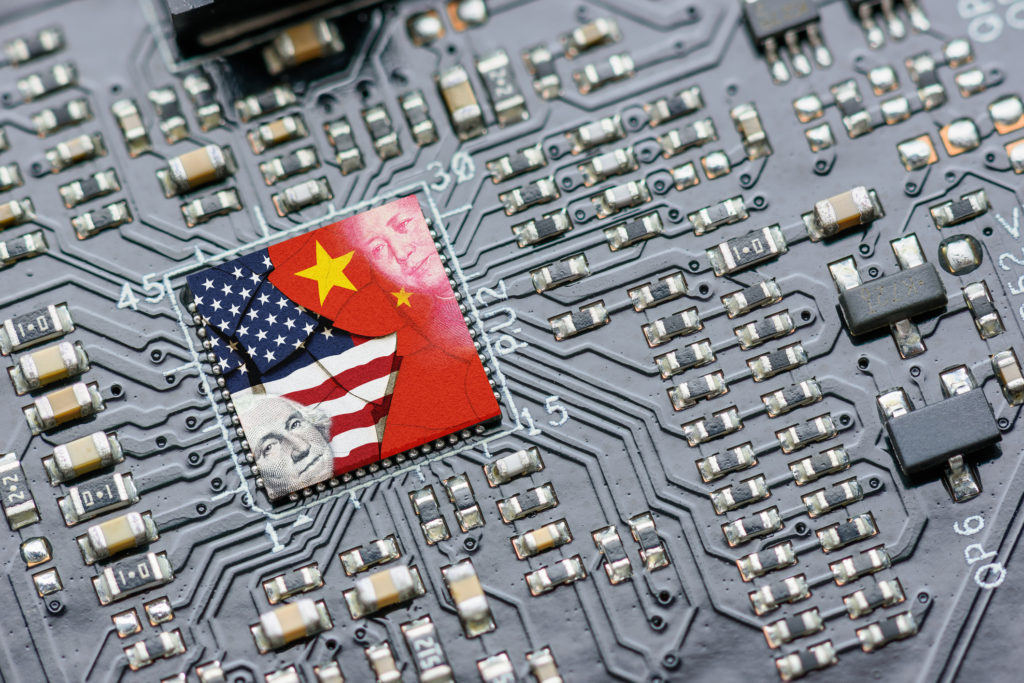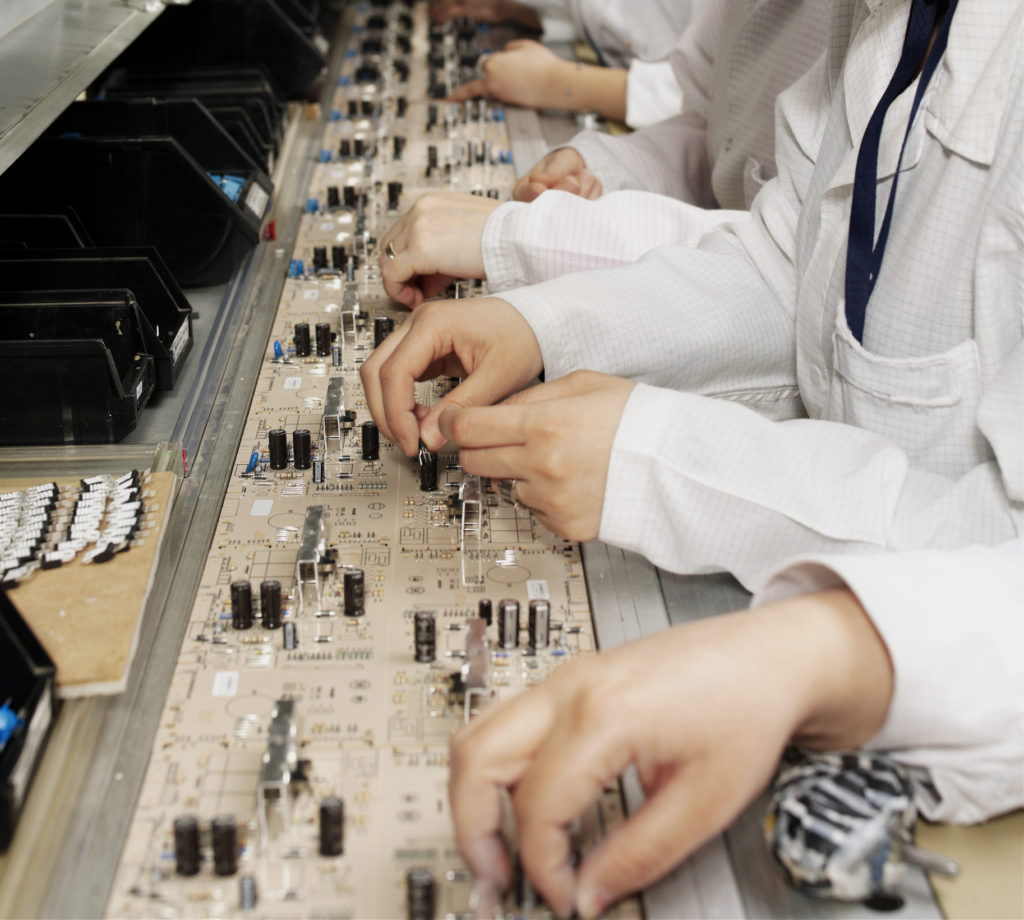
The Information Technology and Innovation Foundation finds China has already surpassed the United States when it comes to total innovation output.
I probably don’t need to remind readers of this blog that the conventional wisdom for decades from much of the American elite was that offshoring U.S. production was totally the way to go. The thinking went that as long as the United States maintained its lead when it came to innovation, it didn’t matter where stuff was made, the old USA would still be No. 1 on the world scene.
Well, do I have some bad news for those folks!
A new report from the Information Technology and Innovation Foundation, not-so-subtly titled “Wake Up America: China Is Overtaking the United States in Innovation Output,” warns that “China is positioned to evolve from an imitator to an innovator” which “threatens the market share of the United States and allied nations in high-value-added, advanced industries, which are important to U.S. prosperity and security.”
Authors Ian Clay and Robert Atkinson found that in 2010, “China’s innovation and advanced-industry capabilities were approximately 58 percent of U.S. capabilities on a proportional basis (accounting for size of its economy, population, etc.) and 78 percent of U.S. output in absolute terms.” But by 2020, that had increased to 75 percent of U.S. capabilities on a proportional basis and 139 percent (!!!) in absolute terms.
Time to wake up, indeed.
The consequences of losing our innovative edge would be enormous in all sorts of ways, including for America’s national security. The “superiority of the U.S. military rests largely on its technological superiority,” the report notes, and the United States already is far too reliant on imports to supply our military. Clay and Atkinson write:
“…even if the United States could reliably count on other countries to provide it with military technologies and supplies, its superiority would be diminished by definition. If the United States must rely on others for the development and production of defense technologies, then its military can only be as technologically advanced as its suppliers’.”
Losing innovation also would be harmful to economic security, leading to lost jobs and lost market share. But as we’ve seen over the past several years thanks to the COVID-19 pandemic and supply chain crisis, it also could create a ripple effect across the entire economy.
Semiconductors are the most well-known and best example of this. Those little chips are needed in pretty much every appliance these days; a single automobile needs thousands of them. The United States invented the semiconductor and used to dominate production, accounting for 37% of total global production in 1990. Today, it’s just 12%, and that lack of production led to a whole lot of problems when a supply crisis hit.
Now the United States is taking action to rebuild its semiconductor manufacturing base, but it’s a lofty task. Making a semiconductor requires a whole lot of know-how. The ITIF report points out that a dynamic random access memory chip (DRAM) takes 1,000 steps to build, and requires complex (and expensive) machinery to do so. Plus, you need a workforce that knows what it is doing and an ecosystem around it to ensure innovation continues.
Therefore, it’s better to maintain and strengthen production rather than build it from scratch (or, as the United States is now attempting to do, rebuild much of it).
Which brings us back to China, which has served as the factory of the world for the past two decades. That role has helped China increase its innovative prowess, some of it through illegal means. For example, China’s government stands accused of rampant intellectual property (IP) theft, including by requiring companies to hand over their IP to do business in China.
But not all of China’s innovation gains have been so nefarious. Making things isn’t just about producing a single product, after all. As folks like Dan Breznitz have pointed out, a whole lot of innovation happens on the factory floor. By ceding so much production to China, the United States handed over not just our own innovation but our ability to continue to innovate.
While the United States has recently taken steps to stop the transfer of critical technology to China, it continues to happen a lot more than you may think.
But China’s government also has proactively worked to up its innovation abilities. The report dives into just how China has managed to catch up with the United States, from pouring hundreds of billions of dollars into research and development to filing more international patents than the United States to increased production in high-tech areas like aircraft manufacturing, electronics, pharmaceuticals, and publishing, including software.

While Clay and Atkinson are sounding the alarms, not everyone is so convinced.
Kellee Wicker, director of the Science and Technology Innovation Program at the Wilson Center, pointed out to the South China Morning Post (SCMP) that the ITIF study ends in 2020, just before the United States began significant efforts to boost its industrial policy, including via new laws like the Inflation Reduction Act and CHIPS and Science Act.
“They’re saying they’re kind of eating our lunch,” Wicker said. “But that’s only a current trend, and we’re in the middle of taking a brand new tack toward really boosting the stuff they’re talking about.”
Other commentators told the SCMP that China is hugely adept at hiding weaknesses, so it’s actually unclear just how much China has gained in innovation.
But the SCMP noted that “Western leaders and technology experts have a long history of underestimating China,” and that’s a point Clay and Atkinson make in their report. The duo note:
“Many U.S. elites comfort themselves with the narrative that China, at least under the leadership of Xi Jinping, cannot truly innovate and that the U.S. therefore has little to worry about. But this view is premised on too-narrow a view of innovation, largely one referring to the development of science-based, new-to-the-world products. Not only is this definition too narrow for assessing advanced-industry strength, but it is also not clear that this still even rings true given China’s recent gains in areas such as space exploration, genomics, AI, and quantum computing.”
If there’s one place that everyone seems to agree, it’s that the United States must get serious about its industrial innovation and production capabilities if it wants to stay in the innovation game. As AAM President Scott Paul likes to put it, things like the CHIPS Act must be the first step, not the last word, when it comes to efforts to strengthening American innovation.
Clay and Atkinson compare our moment in history to that of Alexander Hamilton’s efforts to ensure U.S. technological independence from England, the creation of the Arsenal of Democracy in World War II, and the decades-long effort to win the Cold War.
“In each case, leaders agreed on the challenge and, albeit sometimes with difficulty, mobilized political will and societal and economic resources to respond and win,” the authors write. “That is once again America’s challenge. In the next decade, America must decide whether it will meet this challenge or shrink from it.”
